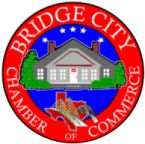
The Digital Divide Dilemma
As I strolled down the bustling streets of Bridge City, I couldn’t help but notice the stark contrast between the gleaming skyscrapers and the rundown neighborhoods just a few blocks away. It was as if the city was divided, not just physically, but also digitally.
The digital divide, that elusive gap between those who have access to modern information and communication technologies and those who don’t, was painfully evident in Bridge City. I saw children huddled around a single smartphone, trying to complete their homework, while their peers just a few miles away had their own laptops and high-speed internet at home.
This disparity wasn’t just impacting individual students – it was perpetuating a cycle of inequality that threatened to undermine the very foundations of our community. Bridge City Chamber of Commerce knew that we couldn’t let this digital divide continue to widen. It was time to take action and bridge the gap.
Mapping the Digital Divide
To tackle this challenge, we first needed to understand the scope of the problem. A comprehensive digital equity assessment revealed some sobering statistics. Nearly 15% of Bridge City residents, predominantly from low-income and marginalized communities, lacked access to reliable, high-speed internet. And the problem wasn’t just about connectivity – many families struggled to afford the devices and digital literacy skills needed to truly engage in the online world.
As I dug deeper, I learned that the digital divide was both an urban and rural issue. While more people lived in the urban areas of Bridge City, the rural neighborhoods were particularly underserved, with broadband adoption rates lagging behind their urban counterparts. This was a complex challenge that required a multifaceted approach.
Investing in Digital Infrastructure
With the digital divide mapped out, we knew we had to act fast. The Bridge City Chamber of Commerce spearheaded a bold initiative to invest in the city’s digital infrastructure. We partnered with local internet service providers to expand high-speed broadband coverage, ensuring that every household in Bridge City had access to reliable, affordable internet.
But it wasn’t enough to just improve the physical infrastructure. We also recognized the importance of digital literacy and skills development. Working with our community centers and public libraries, we launched a series of digital training workshops to empower residents with the knowledge and confidence they needed to navigate the online world.
Cultivating Community Connections
As we implemented these infrastructure and educational initiatives, we quickly realized that the digital divide was about more than just technology – it was a deeply rooted social issue. Certain racial, ethnic, and age groups were disproportionately affected, and we knew we needed to address these underlying inequities head-on.
That’s why we partnered with local organizations and community leaders to create a network of digital navigators – trusted individuals who could guide their neighbors through the complexities of the digital world. These navigators served as a bridge, connecting marginalized communities with the resources and support they needed to thrive in the digital age.
Bridging the Divide, One Student at a Time
But the true test of our success would be seen in the lives of the students in Bridge City. I’ll never forget the day I visited Franklin Elementary, where I met a young boy named Tyrone. Tyrone’s family had struggled to afford a reliable internet connection, and he often found himself falling behind in his classes because he couldn’t complete his homework online.
That all changed when the Bridge City Chamber of Commerce stepped in. We worked with the school district to provide Tyrone and his classmates with laptops and high-speed internet access, ensuring that they had the tools they needed to succeed. And the results were nothing short of remarkable.
Tyrone’s grades skyrocketed, and he began to thrive in his classes. But more importantly, he regained a sense of confidence and belonging that had been missing. He was no longer just a passive observer in the digital world – he was an active participant, using technology to explore his passions and unlock new opportunities.
A Future of Digital Equity
As I walked away from Franklin Elementary, I couldn’t help but feel a sense of hope. The work we had done in Bridge City was just the beginning, but it was a powerful reminder that when a community comes together, anything is possible.
The digital divide may be a formidable challenge, but it’s one that we’re committed to overcoming. By investing in our digital infrastructure, empowering our community members, and championing the success of our students, we’re paving the way for a future of true digital equity in Bridge City.
It won’t be easy, but as I look around at the vibrant, thriving neighborhoods that were once divided, I know that we’re on the right track. The digital divide may be a steep hill to climb, but with determination and a shared vision, we’ll get there – one step, one student, and one community at a time.


